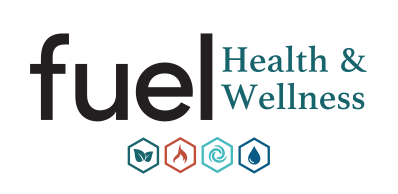When it comes to recovering from an anterior cruciate ligament (ACL) injury, the process can take months and years. However, with advancements in medical technology, various interventions are being explored to speed up the healing process. One such method is Photobiomodulation (PBM), also known as laser therapy. Let’s dive deep into understanding how PBM might be a game-changer in ACL repair recovery for people in Grand Rapids, Michigan.
What is Photobiomodulation (PBM)?
Photobiomodulation, formerly known as Low-Level Laser Therapy (LLLT), involves the use of certain wavelengths of red and near-infrared light to stimulate, heal, regenerate, and protect tissue that has either been injured, is degenerating, or at risk of dying. While PBM has been used to treat a wide range of conditions, from chronic pain to neurological issues, its potential in orthopedic post-surgery recovery is promising.
How Does PBM Work?
At a cellular level, PBM increases the production of cellular energy, reduces oxidative stress, and promotes the release of growth factors. This results in:
- Improved Cellular Repair and Function: PBM can enhance the activity of fibroblasts (cells that produce collagen) and mitochondria (parts of the cell that produce ATP energy), leading to quicker and stronger tissue repair.
- Anti-inflammatory Effects: By reducing the number of inflammatory cells and increasing the number of anti-inflammatory cells, PBM can help manage post-operative swelling and pain.
- Analgesic Effects: PBM can reduce nerve conduction velocity and block pain receptors, acting as a natural painkiller.
Photobiomodulation in ACL Repair Recovery
ACL injuries often require surgical intervention, followed by a long period of rehabilitation. Incorporating PBM into the recovery process can have several benefits:
- Reduced Pain and Inflammation: The post-operative phase can be painful. PBM can help manage this pain, potentially reducing the need for painkillers.
- Accelerated Tissue Healing: By promoting collagen production and enhancing cellular function, the repaired ACL can heal more robustly.
- Decreased Scar Tissue Formation: Reduced scar tissue can lead to better joint mobility and reduce the risk of future complications.
- Enhanced Rehabilitation: With reduced pain and improved joint function, patients may find it easier to engage in rehabilitation exercises, leading to quicker recovery of strength and mobility.
Considering PBM for ACL Repair Recovery
While the benefits of PBM sound promising, it’s essential to approach this treatment method with a few considerations in mind:
- Professional Consultation: Always consult with an orthopedic surgeon or physical therapist about incorporating PBM into a recovery plan.
- Customized Treatment: PBM parameters like wavelength, dosage, and treatment duration might vary based on individual needs.
- Complementary Treatment: PBM should be seen as a complementary treatment to traditional recovery methods, not a replacement.
Conclusion
With the rising interest in non-invasive treatments to enhance recovery, Photobiomodulation offers a promising avenue for those recovering from ACL repair surgeries in Grand Rapids, Michigan. As research continues and technology advances, PBM could soon become a standard part of orthopedic post-operative care. Always prioritize professional advice when considering any new treatment modality.
If you are interested in utilizing photobiomodulation at Fuel Health & Wellness in Grand Rapids, Michigan simply call us at 616-757-0932 to schedule an appointment and speak with a healthcare professional.

